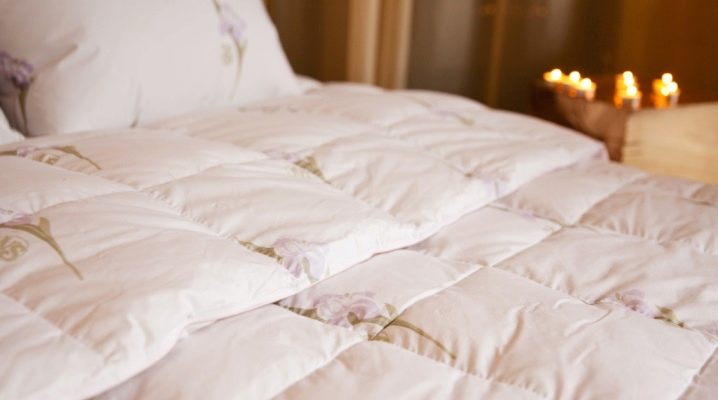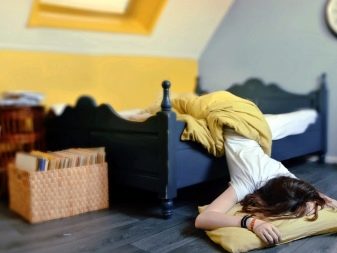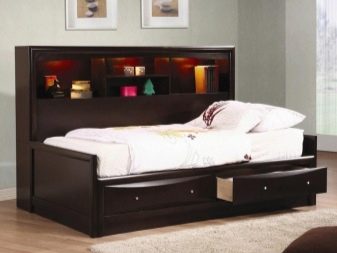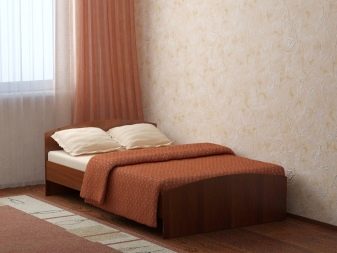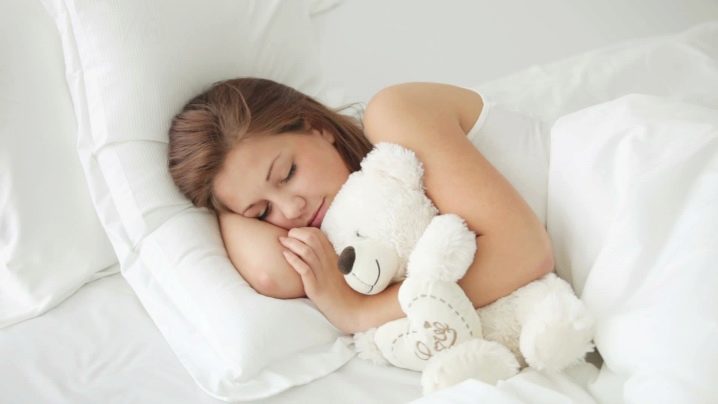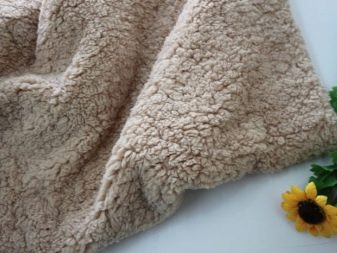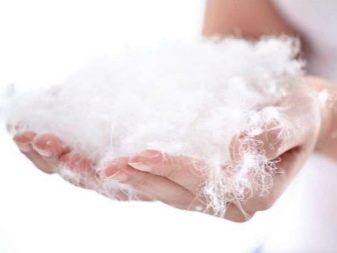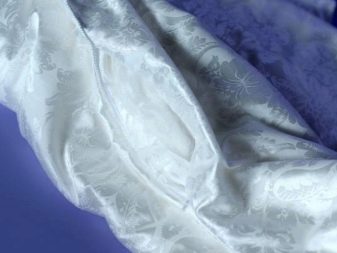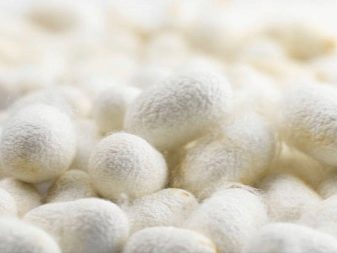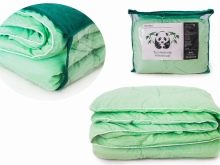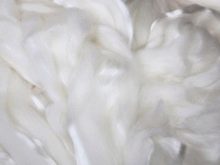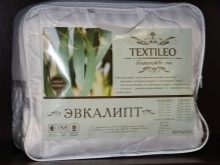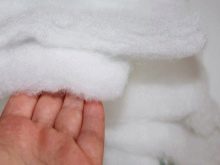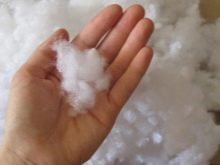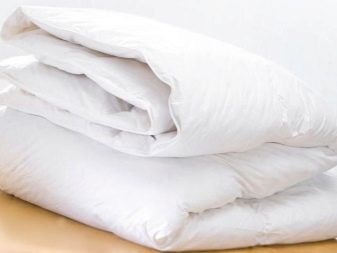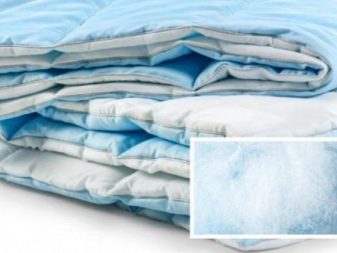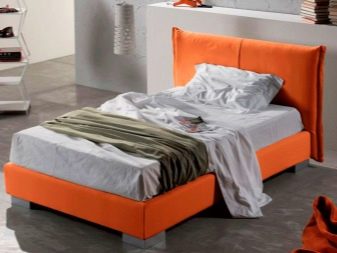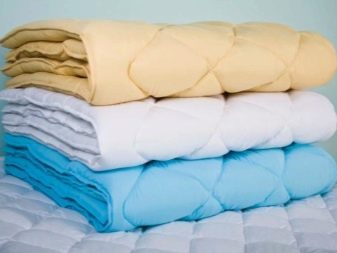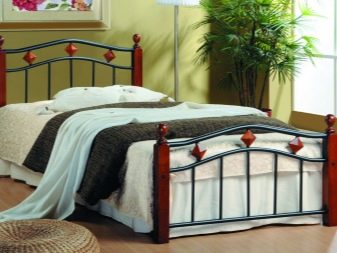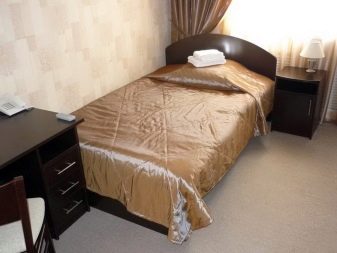Standard sizes of one-and-a-half sleeping blanket and duvet cover
In an effort to ensure a quiet and healthy sleep for themselves and their entire family, many housewives think about choosing a suitable blanket. One of the most popular varieties is the one and a half-sleeping blanket, which is sometimes chosen not only for single beds, but also for double beds.
Standard sizes
A one-and-a-half-sleeping blanket has become so called by no means because one and a half people can hide under it. So they began to call him, because the average width of this blanket is one and a half meters. It is also called family because it is suitable for a family bedding set with two half-sleeping blankets. This option will suit the couple who experience some discomfort while sleeping under one large bedspread.
A separate one-and-a-half-blanket for each spouse will allow you not to wake up from the cold at night and settle down as comfortably as possible for bedtime, without interfering with each other.
It would seem, from the name you can understand what are the dimensions of the "lorry". However, today there is some classification of one and half-sleeping bedding:
- Subjects for sleeping Euro-size are the most common and are considered a kind of standard among the "lorry". The dimensions of such products are 155x215 cm. For this kind of blankets, the easiest way is to pick up a set of bed linen.
- At the time of the Soviet Union, bedding had its own standards. For one-and-a-half-sleeping blankets, dimensions were taken 140x205 cm. Today, production by such standards takes place, such dimensions will be the way for narrow beds so that the blanket does not hang on the floor.
- Models with the parameters of 160x205 cm are on sale less often. Typically, this modification is chosen as a child option.
- Non-standard sizes of sleeping accessories can have dimensions of 160x215 cm or 160x220 cm. Models with such parameters are rarely seen, and bedding on such a blanket is not at all easy to find.Non-standard options will appeal to people of high growth, as models of normal size are not able to cover a tall person completely.
Materials
Lorries, as well as other types of blankets, differ in their composition. Based on the individual characteristics and personal preferences, each person can choose the right filler for him. All existing fillers can be divided into materials of natural origin and synthetic fillers.
Natural
Natural fillers include:
- Wool - the most common material for the manufacture of blankets. Camel and sheep wool, as well as undercoat or down of llama, merino and cashmere mountain goats are used to manufacture products of this category. The advantages of woolen bedding include the ability to retain heat well and absorb excess moisture. All foreign odors quickly disappear from woolen blankets, the products are of relatively low weight and long serve their owners with proper care. The disadvantages of wool products include the fact that they can be attacked by moths or dust mites.
A camel blanket is considered one of the warmest, and in addition to its thermal properties, merino and sheep wool also has healing properties.
- Blankets with downy filler considered the warmest. For stuffing down models using feathers and down ducks and geese, sometimes fluff loons. Although the products with downy filler are rather voluminous, they have practically no weight and pass air through themselves well. However, in case of excessive moisture, down comforters can quickly dampen, and for the proper care they will need the help of professionals.
In addition, downy products should not be chosen for people prone to allergies, because they can get dust mites.
- Silk blankets can be attributed to premium products. The filler of such models is made from silkworm cocoons, which are processed using a special technology. Due to this feature, silk-stuffed specimens are not subject to attack by ticks and other parasites. The amount of filler used determines whether this or that model is the winter or summer option.
Products with such a filler are well breathable and maintain a comfortable temperature,they are suitable for allergies and will last a long time. However, taking care of them is not so easy.
- Bamboo fiber began to use in textile production not so long ago, but many of them have already managed to catch the fancy of products. Bamboo blankets are highly eco-friendly and very soft, perfectly breathable and absorb moisture. They do not cause allergies and even have antibacterial properties. The disadvantages of bamboo models can be attributed to their high cost and short life, and they will not be so hot.
- Lyocell or Eucalyptus Cellulose Blankets distinguished by their strength, softness and lightness. Like many other natural fibers, eucalyptus has preventive properties and is not capable of causing allergies. Models with eucalyptus filler help not to freeze in winter and not to sweat in summer, however, you will have to pay a considerable amount for comfort.
Artificial
Modern technologies make it possible to manufacture high-quality blankets from artificial fibers that do an excellent job with their function.
The price for them is more affordable than for products made from natural fibers, they do not cause allergies and are not picky in their care.Many artificial fillers are made of polyester fiber, so they have common properties:
- Sintepon blanket is the most budgetary option, because its quality is not up to par: during operation it may lose shape and volume.
- Polyester it is distinguished by its softness and pleasant tactile sensations, and the characteristics make matter similar to wool.
- Holofiber is an excellent option for making blankets. The airiness and lightness of this material gives a special structure of fibers in the form of springs. It is also called artificial down.
- The best synthetic material for sewing blankets is considered tinsuleyt. According to the properties of such products are comparable with the down, but the life and ease of maintenance make tinsuleyt favorite. The price for models with this matter is above average.
- Silicone blankets do not absorb odors and remove moisture well. The soft and weightless structure will appeal to many, and ease of care and durability attract buyers at a relatively low price.
We select a duvet cover on a one-and-a-half blanket
In order to avoid difficulties when using a one-and-a-half-quilt tucked into a duvet cover, you should choose bedding of the correct size.Duvet cover should be selected with a small margin. It is enough that in the filled form there remains 5 cm in length and width of free space. This will allow to avoid knocking down the blanket on one side in the future, as well as facilitate the process of changing bed linen.
It should also be borne in mind that most of the duvet covers after washing can shrink. Buying high quality bedding, you can not worry about it.
Usually, the manufacturer uses a non-shrinking fabric, or immediately when cutting, takes into account the allowance, which will reduce the size of the duvet cover. If there are doubts about the impeccable quality and integrity of the manufacturer, a set with a duvet cover should be taken 5 or 10 cm wider than the blanket. It is precisely this value that is taken into account, since the fractional thread in fabrics for bed linen is arranged in width.
Tips for choosing
The modern bedding market offers a wide range of accessories for sleeping. First of all, people choose exactly what is convenient for them.
A few tips to help determine the purchase:
- When choosing the combined models,in which natural down is combined with artificial fibers, preference should be given to specimens with a percentage of natural filler of 40 or more.
- When buying a blanket with down or silicone filling you need to pay attention to the quality of sewing. A product that is stitched with squares or small-size cassettes will be of higher quality, and the filler in it will be less likely to stray.
- Cluster blankets, in which the filler pockets are arranged in a staggered manner, will appeal to particularly fastidious people. Shaking such a blanket, you can concentrate the filler in one place and warm a separate part of the body, for example, legs.
- Products with a uniform filler in the form of natural or synthetic fibers are treated with a quilting machine. A quilted quilt blanket will cost less than a product with hand-embroidered fancy patterns.
- In pursuit of a low price, textile manufacturers add synthetics to eucalyptus products. If this fact is the place to be, then the ratio of synthetics and natural fibers should be 50/50.
- A changeable blanket will be a practical option for any season.On the one hand, such models have fabric upholstery, and the other side is warmer and made of wool or even fur. Conveniently, if the two parts are interconnected by buttons or lightning and can be used separately from each other.
- Before buying, you should decide what degree of warmth you need a blanket. Usually the manufacturer indicates this information on a label, where 5 is a very warm blanket, and 1 is a summer version with a minimum amount of filler.
- Fabric for sewing case plays an important role. The best indicators of strength and pleasantness of tactile contact are natural cotton materials, satin or teak covers. Luxury models may have a silk case. When using synthetic fillers, some manufacturers use polyester, which can be further processed by impregnation from dirt and bacteria.
You will learn more about the standard sizes of one-and-a-half blankets and duvet covers in the following video.
